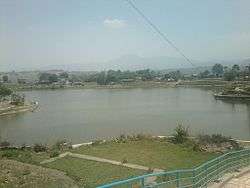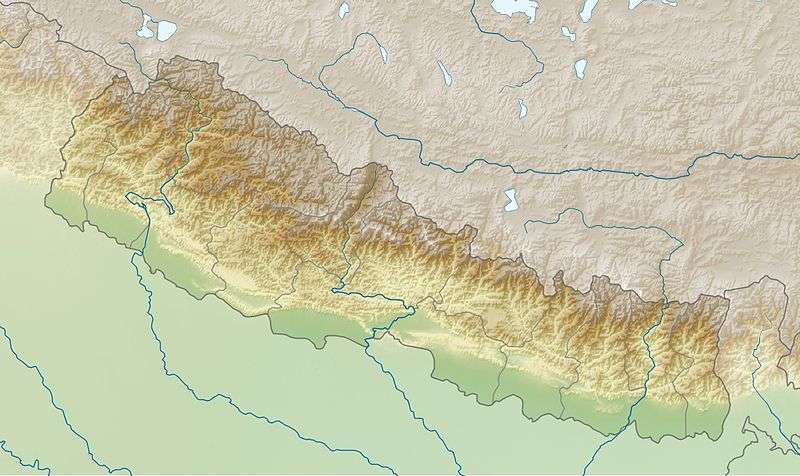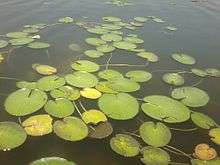Taudaha Lake
| Taudaha Lake | |
|---|---|
 Taudaha Lake and the surrounding | |
 Taudaha Lake Location in Nepal | |
| Location | Kathmandu District, Kirtipur |
| Coordinates | 27°38′55″N 85°16′55″E / 27.6487°N 85.2820°ECoordinates: 27°38′55″N 85°16′55″E / 27.6487°N 85.2820°E |
| Lake type | Freshwater |
| Basin countries | Nepal |
| Frozen | Does not freeze |
| Settlements | Kirtipur |

Taudaha Lake is a small lake in the outskirts of Kathmandu, in Nepal. The name comes from a combination of Newari words 'Ta', meaning snake and 'Daha', which means lake.[1]
Mythological origins
The Taudaha Lake is believed to be a remnant pool of the huge lake that once existed where now the city of Kathmandu sits. According to mythology, a Buddhist mythical character Manjushree cut the hill in the valley's south, allowing the lake's water to drain off, thereby creating land that was duly occupied by people. Folklore suggests that that "cut" in the hill is the Chobar Gorge, a narrow passage from which the Bagmati River exits the Kathmandu Valley. After the water of the ancient lake drained away, a few small lakes and ponds were created beyond the hills. Taudaha is believed to be one of those ponds.[1]
When the lake was drained, countless nagas, mythological creatures that were half human and half serpent, were left homeless. This made the Naga King Karkotak livid. In order to allay his wrath, the locals living near Taudaha built an underwater palace, studded with precious stones and riches beyond imagination.[1] The Serpent King was pleased and ruled his serpent subjects in their underwater kingdom. The king also promised to protect the humans living around the lake, on the condition that the tranquility of his water abode never be disrupted. It is due to this that even today locals do not swim or fish in the lake.
Migratory bird haven
The lake, arguably the only clean water body remaining in the Kathmandu Valley, is a stop over for numerous migratory bird species. Some of the visitors to the lake include the cormorant, ruddy shelduck, serpent-eagle and common teal.
-_Female_at_Bharatpur_I_IMG_5336.jpg)
References
- 1 2 3 Candiani, Gianantonio. "The lake of snakes". ECS Nepal. Retrieved 18 February 2013.